![]()
 outside of Osnabrück, a town in Lower Saxony, Germany. The origin
of the town goes back to Charlemagne, the emperor of the Franks, who in
780 AD founded a missionary settlement. History was made in
Osnabrück
from 1643 to 1648 in connection with negotiations that led to the Peace
of Westphalia which ended the Thirty Year War.
outside of Osnabrück, a town in Lower Saxony, Germany. The origin
of the town goes back to Charlemagne, the emperor of the Franks, who in
780 AD founded a missionary settlement. History was made in
Osnabrück
from 1643 to 1648 in connection with negotiations that led to the Peace
of Westphalia which ended the Thirty Year War.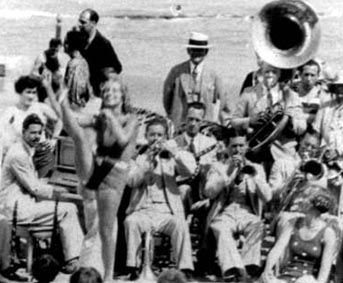 inan
antique shop in Indiana. Scott told me (e-mail message May 4, 1999)
that
he knows that the cornet player is not Bix, but that when he saw the
photograph,
he "almost swooned". Undoubtedly, the resemblance is uncanny. It might
take a while to download the image, but it is worth waiting. I did not
want to loose resolution.
inan
antique shop in Indiana. Scott told me (e-mail message May 4, 1999)
that
he knows that the cornet player is not Bix, but that when he saw the
photograph,
he "almost swooned". Undoubtedly, the resemblance is uncanny. It might
take a while to download the image, but it is worth waiting. I did not
want to loose resolution. 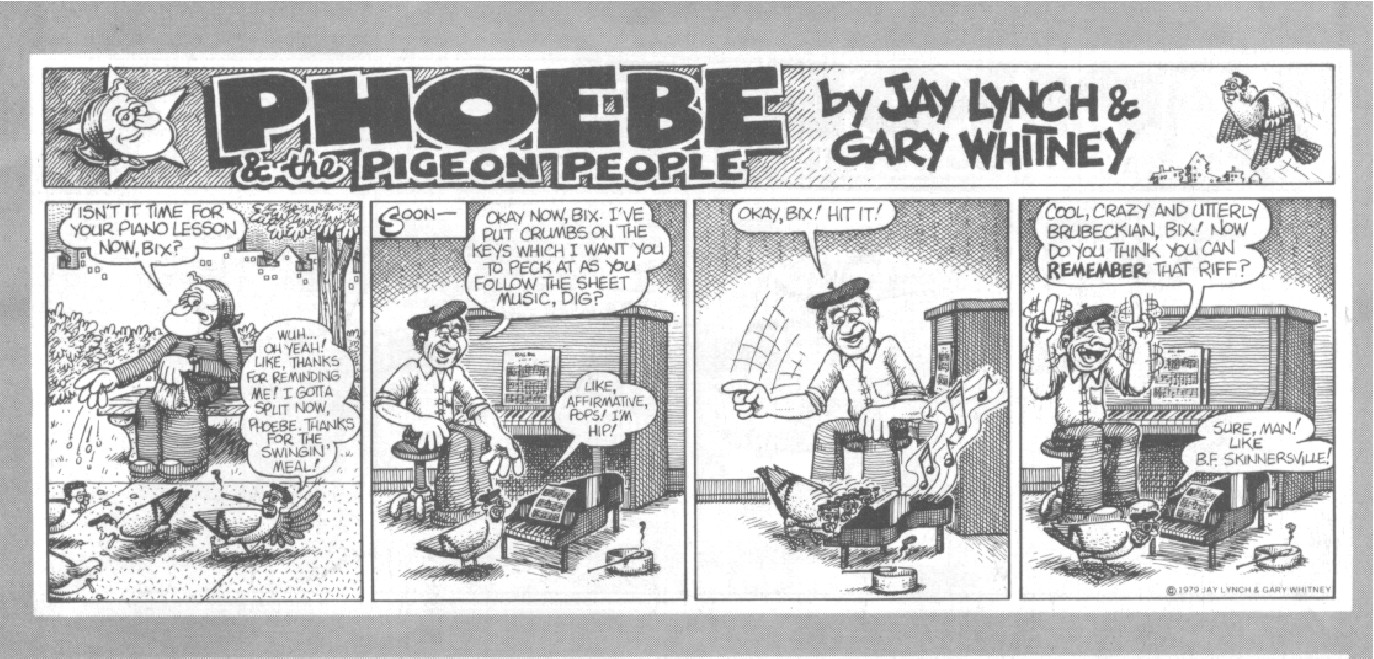

An
Ancient
Hamlet in England.
Bix
and Assendon are two hamlets located near Henley-on-Thames, about 18
miles
from London Heathrow Airport. The name Bix is derived from the Anglo
Saxon
name of the parish Byxe. The Domesday Book 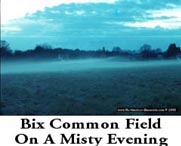 records
the village Bix as Bix Brad and Bix Gibwen. Remains of a Roman villa
are
found nearby. A company that specializes in web page design and in
photographs, Timeless
Dimension, has a web site with two photographs of interest. One is
a photograph of an old church in Bix Bottom Valley, located one mile
from
the hamlet. The other is a photograph of the Bix Common Field
entitled
"On a Misty Evening". Isn't that an amazing coincidence of names? Bix
and
mist!!
records
the village Bix as Bix Brad and Bix Gibwen. Remains of a Roman villa
are
found nearby. A company that specializes in web page design and in
photographs, Timeless
Dimension, has a web site with two photographs of interest. One is
a photograph of an old church in Bix Bottom Valley, located one mile
from
the hamlet. The other is a photograph of the Bix Common Field
entitled
"On a Misty Evening". Isn't that an amazing coincidence of names? Bix
and
mist!!
The
photograph
at right is the work of Mark Alliston and it is shown here through his
courtesy.
Bix
Trail.
Many years
ago
Dirk Jellema, David Jellema's uncle, owned two miles of lakefront on
the
shores of Lake Michigan. As the owner of that land, Dirk had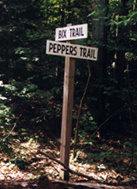 the joyful task of naming some of the trails and roads that existed
there.
He named Bix Trail after Beiderbecke, Peppers Trail after his own dog
"Pepper"
-and- after the Red Hot Peppers (incidentally, there is another trail
named
"Morton Trail", but its sign is down).
the joyful task of naming some of the trails and roads that existed
there.
He named Bix Trail after Beiderbecke, Peppers Trail after his own dog
"Pepper"
-and- after the Red Hot Peppers (incidentally, there is another trail
named
"Morton Trail", but its sign is down).
In Lost Valley, where the
photograph
at the left was taken, Dirk operated a restaurant.Dirk
was a jazz lover. Therefore, it is not surprising that the "Jack Pine
Savages"
with Tom Pletcher played at the restaurant. David Jellema first heard
Tom
Pletcher there. It is also the place where David's Uncle, Gordon Darrah,who
was a record dealer and hosted a radio program in Western Michigan for
years called "The Land of Jazz.", gave him his
first
Bix tape. David refers to Lost Valley as "a magical place
indeed..."
The Jellema's property in Lost
Valley
is only about three miles North of White Lake. The town of
Montague
is on one shore of White Lake, Whitehall on the other. In the
summer
of 1922 Bix had one of his earliest gigs there on White Lake.
I am grateful to David Jellema for sending the image of the Bix Trail sign. Most of the text above is taken from an e-mail message he sent to me on 8/20/99.
Victor
Buono's "New Gig".
Victor Buono,
the movie and television actor, wrote a book of poetry about being fat.
In 1972, he issued an LP, "Heavy!" (Dore Records LP-325) where he read
some of this poetry. The last cut in the record is called "New Gig"
where
Buono mentions Bix. This is a poem about Satchmo going to heaven. It
begins
as follows.
As heaven's portals opened
wide
A brand new saint came
marchin'
in
For one who recently had died
He wore a most aggressive
grin
They handed him a golden horn
Just polished by a cherub's
wing
A gift from friends, Parker,
Handy, Bix and King...
I am grateful to Joe Giordano for sending me an audio cassette copy of the album.
A
Poem that Mentions Bix.
James
Merrill (1926-1995) was a novelist, playwright and poet. One of his
poems
begins as follows.
Bix to Buxtehude to
Boulez,
The little white dog on the
Victor label
Listens long and hard as he
is able.
It's all in a day's work,
whatever
plays.
A
Mention of Bix in a Song.
In
1957, Louis
Prima issued a Capitol album entitled "The Wildest". One of the songs
in
the album is entitled "Lip" and includes a vocal by Dorothy Keely
Smith.
The "Lip" is the name given to a trumpet player that is the center of
the
lyrics for the song. One of the lines in the lyrics goes as follows:
"He's got a tone that's
reminiscent
of a boy named Bix."
Other trumpet players mentioned
in the song are Ziggy Elman, Harry James and Louis Prima. I am sad to
see
Bix in such poor company.
I am grateful to Joe Giordano
for
alerting me about the existence of this song.
Bix
Butterbox.
The
TV Guide of November 5, 1967 carries the following description:
Bix,
the Dinosaur.
James
Gurney is the author of several children's books about Dinotopia, a fictional island where humans and dinosaurs coexist peacefully. The
heroes
of the books are Will and Arthur Denison who shipwrecked on the island
in 1862. The first dinosaur they met was Bix, a protoceratops who is
Ambassador
and Translator. Bix guided Will and Arthur in their various voyages in
their discovery of the island. A plush toy inspired by the Bix
character
in the books is shown on the left.
fictional island where humans and dinosaurs coexist peacefully. The
heroes
of the books are Will and Arthur Denison who shipwrecked on the island
in 1862. The first dinosaur they met was Bix, a protoceratops who is
Ambassador
and Translator. Bix guided Will and Arthur in their various voyages in
their discovery of the island. A plush toy inspired by the Bix
character
in the books is shown on the left.
Bix, the
Dinosaur,
has its own website.
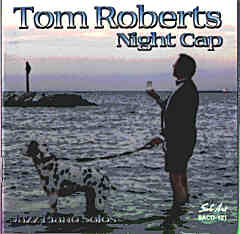 traditional
jazz groups such as Eddie Bayard's Steamboat Stompers on the steamboat
"Natchez", The Crescent City Rhythm Kings, and The Silver Leaf Jazz
Band.
Tom has eleven CDs to his credit and has just released his second solo
CD on Stomp Off Records. I will cite just a few of the musicians that
he
has recorded with: Vince Giordano, John Gill, Chris Tyle, and Dan
Levinson.
Tom owns a dalmatian that he named Bix Beiderbark. The image on the
right
is from the cover of Tom's 1997 CD of
traditional
jazz groups such as Eddie Bayard's Steamboat Stompers on the steamboat
"Natchez", The Crescent City Rhythm Kings, and The Silver Leaf Jazz
Band.
Tom has eleven CDs to his credit and has just released his second solo
CD on Stomp Off Records. I will cite just a few of the musicians that
he
has recorded with: Vince Giordano, John Gill, Chris Tyle, and Dan
Levinson.
Tom owns a dalmatian that he named Bix Beiderbark. The image on the
right
is from the cover of Tom's 1997 CD of Alain Serres (writer) and
Sophie
Dutertre (illustrator) have published, in France, a children's
book titled "Krocobill et Robot-Bix." According to the book notes in
Fnac
(a popular store in Europe that sells books, records, videos),
Krocobill
is a small child who is fascinated by Robot-Bix, a television hero. One
day, Krocobill's grandmother, gives him a toy Robot-Bix. Krocobill
takes
the robot to school, hoping that Pierrot and Geneviève,
two
of his classmates, will no longer dare bothering him. But things do not
happen as expected. Krocobill becomes courageous, not because of the
robot,
but in order to save him from his cruel classmates. It is a
touching
story for children four and older.
titled "Krocobill et Robot-Bix." According to the book notes in
Fnac
(a popular store in Europe that sells books, records, videos),
Krocobill
is a small child who is fascinated by Robot-Bix, a television hero. One
day, Krocobill's grandmother, gives him a toy Robot-Bix. Krocobill
takes
the robot to school, hoping that Pierrot and Geneviève,
two
of his classmates, will no longer dare bothering him. But things do not
happen as expected. Krocobill becomes courageous, not because of the
robot,
but in order to save him from his cruel classmates. It is a
touching
story for children four and older.
A Short Story That Mentions Bix
"Pulphouse: The Hardback Magazine" was edited by Kristine Kathryn Rusch in Eugene, Oregon. The Fall 1988 issue, entitled "Horror" contains short stories, essays and articles. One of the short stories is "The Night I Saw Bix Beiderbecke Playing on the Corner of Fifth Avenue and 53rd" by Ron Goulart.
Some information about
Ms.
Rusch can be found at http://www.greenmanreview.com/rusch.html
I quote:
"Few people have had as diverse
an impact on science fiction and fantasy as Kristine Kathryn Rusch.
Winner
of the John W. Campbell Award in 1990 for best new writer, Rusch made
her
mark with powerfully emotional short stories. In 1989 she shared a
World
Fantasy Award with her husband and collaborator, Dean Wesley Smith, for
their work on Pulphouse: A Hardback Magazine. From 1991-1997 she edited
The Magazine of Fantasy and Science Fiction, for which she won the Hugo
Award for best editor in 1994."
The short story deals with black magic, sorcerers, demons and runes (I had to look it up; letters of the earliest Germanic alphabet used by Scandinavians and Anglo-Saxons from about the 3rd century), and holes in the fabric of time. According to the story, a sorcerer can write a number of runes on a piece of parchment and slip it to his intended victim. If the individual has the piece of parchment in his possession by a given time, a demon will home in and destroy him. The only way he can save himself is by passing the parchment to someone else. The story relates how this fellow is first given the parchment and then passes it on before the deadline. As he returns home, the text reads:
*************
When I was approaching 51st
Street,
I began hearing music from a couple of blocks ahead. The tune was
"Singing
the Blues". The fellow on cornet had a round plump face, slicked hair
and
a small mustache. He wore a wrinkled tuxedo and was paying attention to
nothing but his music. Seated in a camp chair was a lean blond man
playing
a banjo. His case was open on the damp sidewalk, a scatter of small
coins
and a single dollar bill resting on the faded purplish plush. The
drummer
was tall and thin, playing a single snare while standing in a hunch.
I recognized the horn player
while
I was still several yards from him. It was Bix Beiderbecke, the
legendary
jazz musician who'd died back in the early 1930's sometime. I'd seen
his
picture in histories, heard his records.
I was tempted to stop and
listen,
but I didn't. It seem wiser tot keep moving.
One of them called something
after
me. I don't know, though, what he said. [End of story]
*********
Evidently, Mr. Goulart knows quite a bit about Bix: his total concentration in music, his disregard for personal grooming, his most important recording, and the fact that in his latter years he had a mustache. How many jazz fans, let alone normal people, would know all of these things?
Abstract Art: Bix #2 and Bix # 10.
The exhibition of abstract drawings at Kenise Barnes Fine Art in Larchmont, New York, in February 2001, included two drawings by Andra Samelson. In his review for the February 4, 2001, issue of the New York Times, William Zimmer writes,
"Andra Samelson's two large
ink
drawings each contain a novel half-organic, half-geometric shape. But
the
ink Ms. Samelson uses isn't a special kind for artists. Rather she uses
Bic pens with blue ink. This is obvious in the cross-hatching, which
gives
a sense of volume to the shapes and helps make them ingratiating; any
viewer
can identify with the process. Most of the pieces in the exhibition are
untitled, or have a general series name with numbers added for
individual
works. Ms. Samelson causes a bit of delight when a viewer notices that
her contributions are titled ''Bix #2'' and ''Bix #10.'' The early,
insouciant-sounding
jazz trumpeter Bix Beiderbecke is brought to mind by this play on the
name
of her trusty implement. "
Blenheim, a toy soldier manufacturer in Wales, was
commissioned
to make a set of toy soldiers for a special celebration in Iowa. The
Iowa
set shown here consists of Buffalo Bill Cody, Bix Beiderbecke,
Marilyn
Monroe, an Iowa
Highway
Patrolman and Herbert Hoover, all prominent Iowans except Marilyn. Does
anyone know why Marilyn was included in the Iowa Set?
I am guessing that the name of the Blenheim Toy Soldier Manufacturing Company comes form Winston Churchill's interest in toy soldiers. From an early age, Churchill played with toy soldiers. At one point, he had a collection of about fifteen hundred Napoleonic era troops. A collection of toy soldiers is on display at Blenheim Palace, Churchill's birthplace and the home of the Dukes of Marlborough.
Two close-up views (in black and white) of the Bix toy are displayed in p. 590 of "Bix: The Leon Bix Beiderbecke Story" by Philip Evans and Linda Evans. According to the caption to the photographs in the book, "The arms will move the cornet to his lips". The inscription in the bottom of the tiny (less than three inches) statue reads: "Made in Wales for G. J. Alingh."
I thank Brad Kay for pointing out that the above
image
was posted on ebay.
If the person who auctioned the set finds my posting
of the image offensive, I will remove it immediately.
Randall Enos is an
illustrator of
magazines, newspapers, books, record and CD covers,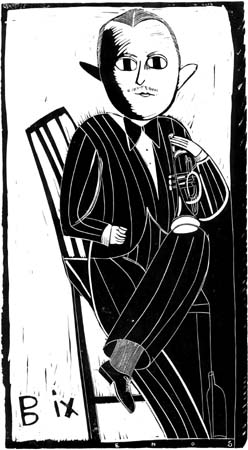
posters, and animated film. To
see some of his portraits/caricatures, click here.
Randall loves Bix and introduced the caricature in the 1992
Illustrators
Society show. The caricature was subsequently published in the annual
Illustrators
Society Annual. The image is included in Randall's website. See the
image
on the right.
I am grateful to Randall for granting me permission to post the image here.
A
Painting
of Bix. (uploaded 08/29/04)
Lino Patruno kindly sent me a
photo
of a painting of Bix by Salvatore Lembo, an Italian painter from Vallo
della Lucania. We see Lino standing next to the painting and holding a
cornet.
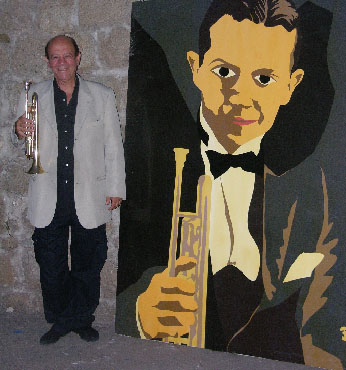
Frasconi, Antonio
R.B.: What were you focused on as a young man in Uruguay?
A.F.: We always had an admiration for anything that came from the United States in the late twenties, thirties, and forties. Everything that came from up there was great. And everything really was great. The writing: John Dos Passos, Theodore Dreiser, Faulkner, Richard Wright. The movies were absolutely the greatest thing. The music! When this American music came into being in the thirties for us it was an explosion.
R.B.: Jazz?
A.F.: Yeah. Mainly
early jazz. The greatest soloists--Ellington,
King Oliver, my God, Bix Biederbeck [sic]. Every side of culture except
painting.
The following is
an image of a xylography of Bix created by Frasconi in 1976.
I thank Leo Masliah for sending me a scan
of the image.
"HE WOULD NEVER USE ONE WORD
WHERE NONE WOULD DO"
by Philip Levine
If you said "Nice day," he would look up
at the three clouds riding overhead,
nod at each, and go back to doing what-
ever he was doing or not doing.
If you asked for a smoke or a light,
he'd hand you whatever he found
in his pockets: a jackknife, a hankie --
usually unsoiled -- a dollar bill,
a subway token. Once he gave me
half the sandwich he was eating
at the little outdoor restaurant
on La Guardia Place. I remember
a single sparrow was perched on the back
of his chair, and when he held out
a piece of bread on his open palm,
the bird snatched it up and went back to
its place without even a thank you,
one hard eye staring at my bad eye
as though I were next. That was in May
of '97, spring had come late,
but the sun warmed both of us for hours
while silence prevailed, if you can call
the blaring of taxi horns and the trucks
fighting for parking and the kids on skates
streaming past silence. My friend Frankie
was such a comfort to me that year,
the year of the crisis. He would turn
up his great dark head just going gray
until his eyes met mine, and that was all
I needed to go on talking nonsense
as he sat patiently waiting me out,
the bird staring over his shoulder.
"Silence is silver," my Zaydee had said,
getting it wrong and right, just as he said
"Water is thicker than blood," thinking
this made him a real American.
Frankie was already American,
being half German, half Indian.
Fact is, silence is the perfect water:
unlike rain it falls from no clouds
to wash our minds, to ease our tired eyes,
to give heart to the thin blades of grass
fighting through the concrete for even air
 restaurants, hotels,
educational institutions, and country clubs
located in the Twin Cities metro area, greater Minnesota, and Western
Wisconsin." The company was founded in 1930 by the Bix
restaurants, hotels,
educational institutions, and country clubs
located in the Twin Cities metro area, greater Minnesota, and Western
Wisconsin." The company was founded in 1930 by the Bix family.
Recently, Dec. 2,
2004 – Goldsmith Agio Helms
announced it has successfully completed the sale of its client Bix Produce Company ("Bix" or
the "Company"). Hans Eekhoff kindly sent me an image of the company's
products, Bix Pure Ground Ginger
family.
Recently, Dec. 2,
2004 – Goldsmith Agio Helms
announced it has successfully completed the sale of its client Bix Produce Company ("Bix" or
the "Company"). Hans Eekhoff kindly sent me an image of the company's
products, Bix Pure Ground Ginger
Through His Music, Bix
Is
Alive
![]()
BRIEF TABLE OF CONTENTS
Recordings
The
Original 78's
Analysis
of Some Recordings: Is It Bix or Not ?
Complete
Compilations of Bix's Recordings
Tributes
to Bix
Miscellaneous
Recordings Related to Bix
In
A Mist